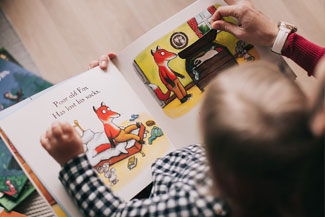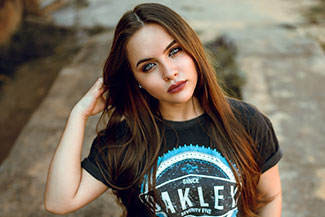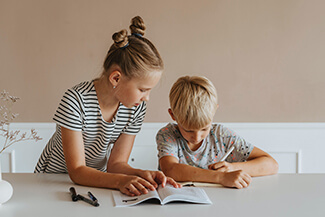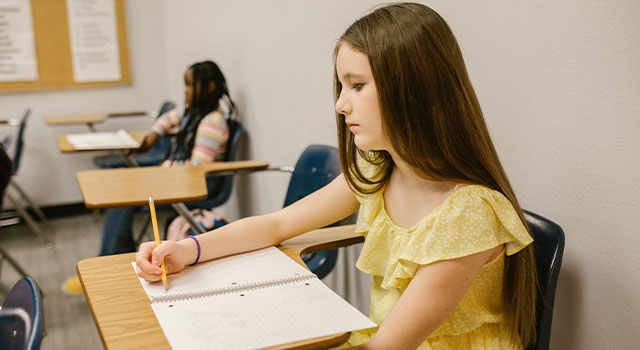
Vision Therapy for Amblyopia
Amblyopia or “lazy eye” is a neuro-developmental vision condition that begins in early childhood. It can also develop in people as a result of a traumatic brain injury or neurological condition.
Many adults also have a lazy eye, either as untreated from childhood or as a result of an event in adulthood – either health or accident.
Those with amblyopia tend to have reduced eyesight in one eye, even when wearing corrective glasses or contacts. If left untreated, this condition can adversely impact success at school, in work, sports and social interactions, which in turn may affect their self-esteem and confidence.
Traditionally, patching the better-seeing eye was the only method used to treat amblyopia. However, this can be very uncomfortable for the child, has limited results past a certain age and does not develop the patient’s normal binocular vision or depth perception.
Vision therapy helps improve the visual abilities through a series of personalized exercises to enhance eye coordination, depth perception and reduce suppression. Suppression occurs where the brain inhibits (stops using) the weaker eye altogether, leading to permanent vision loss.
Speak with Dr. Shirley Ha from the A-Ha Vision and discover how vision therapy can develop the vision skills needed for a successful future.
What is Amblyopia?
 Research has shown that amblyopia is caused by the brain’s inability to use both eyes as a team. As a result, the brain actively ignores the incoming information from one of the eyes. Further to poor visual acuity, those with amblyopia are prone to difficulties with depth perception, eye movements related to reading and using their vision for every day tasks.
Research has shown that amblyopia is caused by the brain’s inability to use both eyes as a team. As a result, the brain actively ignores the incoming information from one of the eyes. Further to poor visual acuity, those with amblyopia are prone to difficulties with depth perception, eye movements related to reading and using their vision for every day tasks.
A “lazy eye” is not at all lazy or weak.
A lazy eye is likely to be just as strong as the other eye, but because of impaired binocular vision, the signals from the amblyopic eye to the brain have been turned off.
It is important to note that a child with amblyopia can show no symptoms. It is therefore imperative to undergo functional eye exams to identify whether the child has or is at risk of developing amblyopia, particularly if a child is frequently squinting, or shutting one eye, or if problems arise in reading or maintaining focus during school or on the sports field.
Amblyopia is treatable at any age, although the earlier the problem is found and treated, the more successful the outcome tends to be.
What Are the Symptoms of Amblyopia?
- Squinting or shutting an eye
- Difficulties with 3D depth perception
- Poor eye-hand coordination
- Tripping and/or balance problems
- Trouble with smooth eye movements
- Slower reading speed and comprehension
How Does Vision Therapy Treat Amblyopia?
Vision therapy improves the patient’s visual acuity, binocular vision, visual processing abilities, reading fluency and depth perception.
This evidence-based program consists of individually prescribed and monitored exercises aimed at developing visual skills and visual processing, made up of regular in-office appointments and (often) a series of assigned at-home daily exercises.
The length of the program can range from several weeks to several months, depending on the severity of the diagnosis and patient compliance.
Amblyopia Treatment for Adults
Vision therapy effectively treats amblyopia in both adults and children. Because vision therapy relies on the neuroplasticity of the brain, and adults generally have less neuroplasticity than children, this treatment method may take longer in the older demographic.
The flip side is that adults tend to comply with the exercise regimen more consistently.
Regardless of age, patients can and do obtain radical improvements in vision and binocular function through effective vision therapy.
Vision Therapy Exercises and Equipment for Amblyopia
 Vision therapy makes use of lenses, prisms, filters, patches and other specialized equipment. Eye patching is referred to as passive vision therapy, which has been shown to less effective than active therapy.
Vision therapy makes use of lenses, prisms, filters, patches and other specialized equipment. Eye patching is referred to as passive vision therapy, which has been shown to less effective than active therapy.
Active therapy uses exercises to retrain how the brain interacts with the eyes and interprets visual inputs.
Over the past few years, advanced digital therapies (including virtual reality devices) have turned traditional vision therapy activities into new, interactive and exciting exercises to improve accommodation (focusing), fixation, saccades, pursuits (eye-tracking) and spatial skills (eye-hand coordination).
At A-Ha Vision, Dr. Shirley Ha and our vision therapists treat amblyopia with proven office-based vision therapy for optimal results. All of our sessions are one-on-one (therapist-to-patient), and are conducted under [eye-doctor] supervision.
Our practice serves patients from Oakville, Burlington, Halton, and Mississauga, Ontario and surrounding communities. We help patients develop their binocular vision and depth perception by making use of the latest technology and methods, thus ensuring that the treatment is effective yet enjoyable. Our personalized vision therapy program is designed for people of all ages.Do you or someone you know have a lazy eye? Get in touch with us today and we’ll offer you a highly effective vision therapy program for an enhanced quality of life.










